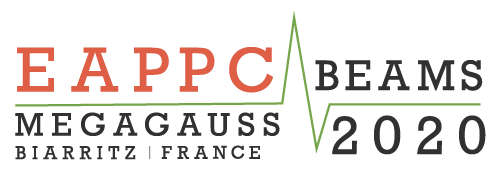About This Project
Dr Tony CAILLAUD
Bio
Dr. Tony CAILLAUD is a group leader at the Target Assembly Laboratory at the Commissariat à l’Energie Atomique (CEA) in the Département des Lasers de Puissance where the Laser MégaJoule (LMJ) is exploited for simulation program to guarantee French nuclear deterrence. He took part of the many experimental campaigns since the first experiment campaign hold on the LMJ in 2014 as a developer and operating of the plasma diagnostics. Tony Caillaud received the PhD in laser-plasma interaction physic at CELIA Laboratory in 2004. Then, he held several positions at CEA, such as developing and integrating plasma diagnostics on LMJ or developing neutron imaging for Inertial Confinement Fusion (ICF) experiments on OMEGA facility, then, testing and specifying electronic acquisition systems and calibrating of streak cameras and optical analysers for plasma diagnostics.
Abstract
The Laser MégaJoule (LMJ) facility status
The Laser MégaJoule (LMJ) program ([1], [2]) aims at providing an experimental facility dedicated to the simulation program that is a keystone to guarantee the French nuclear deterrence. As advanced physics data and models are used to compute numerical simulation, the LMJ offers unique capabilities for the simulation program in High Energy Density Physics (HEDP) by validating the advanced theoretical models, the basic science (by determination of equation of state, atomic and nuclear physics). A large panel of experiments can be done on LMJ to study physical processes at temperatures from 100 eV to 100 keV, and pressures from 1 Mbar to 100 Gbar. Inertial Confinement Fusion (ICF) is also an exciting challenge, since ICF experiments set the most stringent specifications on LMJ’s features. The LMJ building is a huge monument of 300 m length, 150 m width and 40 m height, composed of 4 laser bays containing 5 or 7 laser bundles each (1 bundle is 8 beams). The laser pulses duration go from 0.7 ns to 25 ns. At the end, 176 beams will be available to heat the millimetric targets. The whole laser energy will be about 1.5 MJ (UV light on target). At the building center, a large cylindrical target bay of 30 m diameter contains a 10 m diameter target chamber made of 10 cm thick aluminum covered with 40 cm thick borated concrete. Around the target chamber, a complete set of equipment allows target positioning, laser-matter interaction characterization, and laser focusing on target. An extra multi-PW beam, PETAL [3], coupled to LMJ, offers the opportunity to study matter in extreme conditions. We will introduce and describe the LMJ-PETAL facility status and provide the necessary technical performances consistently with the theoretical models constraints. We will also explain how this program relies on and feeds the industrial network from the Nouvelle Aquitaine area.
[1] A. Michel, “The French megajoule laser project (LMJ),” Fusion Engineering and Design 44 (1), 43-49 (1999).
[2] C. Lion, “The LMJ program: an overview,” Journal of Physics 244 (1), 012003 (2010).
[3] N. Blanchot et al, Plasma Phys. Control. Fusion 50, 124045 (2008).
AFFILIATION
DEA/DAM Centre du CESTA, Le Barp, France


